| Umělec magazine 2005/1 >> Insiders Inc. | List of all editions. | ||||||||||||
|
|||||||||||||
Insiders Inc.Umělec magazine 2005/101.01.2005 Jiří Ptáček | review | en cs |
|||||||||||||
|
Insiders, Dům pánů z Kunštátu, Brno
Dec. 14, 2004 – Jan. 30, 2005; Futura Gallery, Prague, Feb. 17 – May 1, 2005 Immediate Context has disappeared - Immediate Contexts have disappeared. The time has come to dig up the bodies and embalm them, belatedly. The Insiders exhibition presents exquisite works of distinguished artists. Maybe that is for no purpose. The preparation of the Insiders was accompanied by certain expectations. Pavlína Morganová, its curator, was said to be developing a probe into the particularities of Czech art of the second half of the 90s. One of the features of recent art was the accession without much fanfare to the new century. The question was, what myth was Morganová going to shroud the art in? Who is an insider and who is not The term Insider was coined by Morganová not only as the exhibition’s title, but as a metaphor for a particular Czech cultural milieu. In the catalog text she claims: The Czech art scene, or at least, the part of it that is interested in contemporary art, is so small and closed as to be essentially a community of insiders. In the mid-nineties, a new generation appeared on the scene; today, it is an active component that, to a certain extent, shapes the scene. Their first works were made in a specific social situation, when the post—revolutionary euphoria was succeeded by disappointment and a lingering bad mood. Insiders, therefore, are not merely members of one generation, but simply everybody participating in the local art community. Naturally, Morganová could not (and most probably did not want to) consider the subject to such an extent. In the catalog she clarifies the method of elimination she had applied. Her choice was primarily limited to esthetics under the sign of “do-it-yourself” that is “not suited to galleries or apartments.” Eventually she performed “a cross-section of the generation” and appointed the most “crucial personalities.” Out of the originally broad insider term nothing much remained. We could say that insiders do exhibit at the Insiders. This, however, sounds as vague as if we stopped calling tram travelers “passengers,” and started calling them “people.” Then what do we call the exhibiting artists who share some kind of similar cultural genome? Then who are Morganová’s crucial artists? Established: No Surprising Moment The fact that the second half of the last decade witnessed a shift from monumental projects to the use of shoddy materials and DIY esthetics, is generally known and has been much reflected upon. Likewise, the influence of the economic crisis and limited cultural support of creative and alternative approaches is a persistently present subject in the intellectual dialog. Pavlína Morganová states the facts. What is more, the facts serve as the cornerstones of her interpretation of the 90s generation. The way she shows an interest in the phenomenon, however, signifies that Morganová has given up searching for the model containing the “moment of surprise.” A visit of the Insiders conveys different pieces of information. A success early in the artist’s career seems to be the decisive criteria. We can say of any of the artists that their names were often mentioned. Any of them were as well in demand by cultural institutions. We can say that the “crucial invaders” are those who are “persistent, successful, and established.” The Insiders subtitle reads The Inconspicuous Generation of the Second Half of the 90s. Paradoxically, it is the “conspicuous” ones among the inconspicuous who are exhibited. Dangerous DIY-man The conceptual limitations of the Insiders resulted in the absence of several names of seminal importance in the art community of that period. If Jan Nálevka and Pavel Ryška are to be the only representatives of the Brno region, we must wonder at the absence of Jana Kalinová. Kalinová, with her material simulations of everyday objects, contributed as much to Brno as Ján Mančuška had to Prague several years before. Furthermore, it is essential to stress the role of semi-forgotten Tomáš Zelenka in shaping the “doctrine” of the new generation of Brno artists. The reason for the exclusion of Milan Salák is readily understandable. Though his curatorial activity influenced probing artistic issues more than anybody else, his own artistic work returns to traditional media: painting, photography etc. These characteristics would be much too disturbing to the insiders with their narrow concept of “object” and “installation.”1 Milan Salák thus receives a mention only in the catalog. From his curatorial activities we can hardly appreciate the influence he had on the art scene of that time. A certain “satisfaction” might be derived from Salák´s mistakenly attributed authorship of a collective exhibition entitled Cottagers (Prague 2000). It was Tomáš Zelenka who in fact organized the show to intentionally (!) demythologize and ironically gloss over the culmination of DIY-men.2 Milan Salák only participated. The list of “cottagers” furthermore lacks Stanislav Zámečník’s name. He “just” mounted golden polypores and antlers on gallery walls, but really he was responsible for introducing a certain critique and an ironic response to the Praguer trend of DIY. Still, the Insiders sadly lack the period’s subversive gestures. The encounter of Kryštof Kintera and Jiří Černický might shatter the “unattractive” pattern of the Insider exhibition. Černický (1966), though older and longer renowned3 than Kintera (1973), similarly expresses in his work interest in consumer goods and means of production eliminating normally glorified handicrafts. A comparison of Kintera and Černický would complicate the Insider theme: whether and how the artists of the young generation of the 90s defined themselves in relation to the methods of their older colleagues. Kintera´s contribution is not in his gallery-installed Talkmen, but in the transfer of artifacts into civilian zones, and in his interventionist approach to performance. Pavlína Morganová ascribes the change of creative paradigm to the country’s economic difficulties. Nevertheless, she exhibited Kintera’s costly works that do not reflect the paradigm change. The effect the presentation of Federic Díaz’s futuristic projects may have is not yet imaginable. It was his work that survived the economic crisis and created the illusion that Czech art is disposed towards globally-minded artists. At the time when Czech movie theaters were invaded by a cult of the film Šeptej, and the appetite for unusual sensual states grew stronger, Díaz’s architectural utopias proved to have a highly social appeal. I could go on like this; however, my goal is not to point out that Morganová’s choice is too subjective, rather that her code lacks the confidence that should have been gained after sophisticated research into the period’s climate. It is as if the curator were afraid of making complicated differentiations between the variety of approaches that appear familiar and forgiving. Her choice was limited only to those works that partially reflect the period’s mood. By repeating these reflections she creates an image that is blurred, and implies a feeling that the artistic dialog emerging in the 90s was more contained than it actually ever could have been. Just at random, Zbyněk Baladrán and Kamera Skura’s parallel installation in the Brno exhibition proves to be a complete mistake. Collision of asynchronous space The introductory paragraph deals with the term- immediate context. It was coined by Vít Havránek and Ján Mančuška in the article The Revolution in Asynchronous Space for Springerin, an Austrian art magazine. Pavlína Morganová refers to the article in the last chapter of the Inconspicuous Generation and cites: “There is not a firm model of history according to which things can be classified and assessed. There are many histories that are interrelated in different ways. They are in asynchronous relationship to one another; that is, the various stages of development have a different time frame and different reasons and circumstances of occurrence.” The curator substituted subjective experience and artistic attitude for the simplest explanation. Her quirky review denies the rage and antimonies of the period’s social awareness. Colorful nuances and mutual self-defining gestures were limited to a single tendency. The tendency has ripped off all the extraordinariness brought by the exhibition. Therefore the Insiders could be accepted exclusively without the experience of “different,” truly asynchronous events unfolding. Cobweb-institution ratio Not considering the theoretical essay, the Insiders exhibition is a nice lovely equivocation of identity and institutions. Kamera Skura exhibited their rotting ancient potato computers, whereas Pavel Ryška left accidental cobwebs on his thistle-paintings. In the majestic halls of Dům Pánů z Kunštátu, school works, originally exhibited in small, alternative venues, found their place. The works were often temporary. The shift and irony of the museum context became the most pleasant feature of the Insiders. Unfortunately for Prague, the exhibition is to be held in the project-based gallery Futura. The nice museological accent of the Insiders would benefit more from a traditional space such as Městská knihovna (the Municipal Library) or Valdštejnská Jízdárna. There, the curatorial idea might appear as a brave post gallery gesture. The Brno and Prague versions of the Insiders differ. The installation in particular varies greatly. The Brno exhibition, reminiscent of great shows of international institutions, was fragmented in the segmented space of Futura only to create a mosaic of individual presentations, and short links between two or three artists. A room with period catalogs was added. Fortunately, the mosaics there seemed clearly unified, as opposed to the artifacts. Perhaps a combination of both versions of the Insiders would clearly express the curatorial intention. New version vs. reconstruction Concerning the treasures of Czech art of the second half of the 90s, apart from the Insiders, another exhibition that portrayed the period with its limitations and pitfalls stands out. I am referring to the gigantic 99CZ organized in an empty building on Wenceslas Square, and spaces in the Vyšehrad train station. Perhaps it would be more beneficial to revive 99CZ than to build on the pragmatically curtailed Insiders. We’d still be looking in vain for any immediate context, but at least we could return to the original definition of Insiders, which Morganová coined only to speedily get rid of it. Notes: 1. In the catalog, Pavlína Morganová claims that “the Insider generation is characterized by works of objects and installations, post conceptual site-specific and time-specific projects. However, among the exhibited objects, videos and, in Tomáš Vaněk’s case, post conceptual site-specific projects, there was no standard installation 2. This more or less comical failure can not be attributed to Pavlína Morganová, but to the authors of the catalog part Expositional Operations in the Czech Art Scene in the 90s, Eva Krátká, David Kulhánek and Dagmar Svatošová. 3. Tomáš Vaněk, born Černický in 1966, is going to appear at the exhibition of Insiders, as well as Pavel Kopřiva (1968), the artistic companion to Černický.
01.01.2005
Recommended articles
|
|||||||||||||
|
04.02.2020 10:17
Letošní 50. ročník Art Basel přilákal celkem 93 000 návštěvníků a sběratelů z 80 zemí světa. 290 prémiových galerií představilo umělecká díla od počátku 20. století až po současnost. Hlavní sektor přehlídky, tradičně v prvním patře výstavního prostoru, představil 232 předních galerií z celého světa nabízející umění nejvyšší kvality. Veletrh ukázal vzestupný trend prodeje prostřednictvím galerií jak soukromým sbírkám, tak i institucím. Kromě hlavního veletrhu stály za návštěvu i ty přidružené: Volta, Liste a Photo Basel, k tomu doprovodné programy a výstavy v místních institucích, které kvalitou daleko přesahují hranice města tj. Kunsthalle Basel, Kunstmuseum, Tinguely muzeum nebo Fondation Beyeler.
|







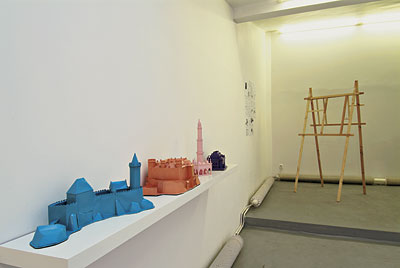
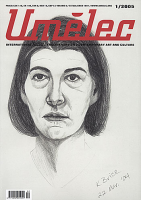






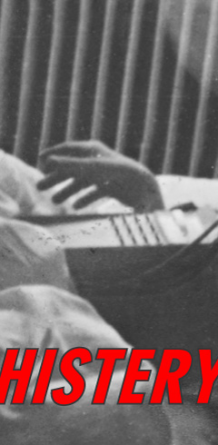






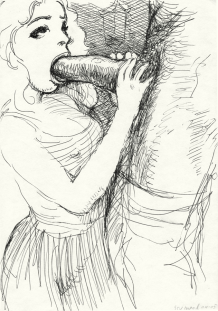




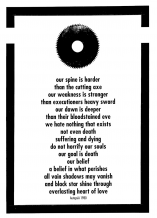
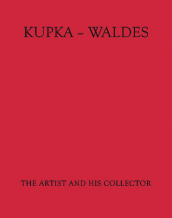
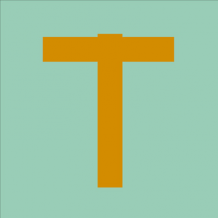
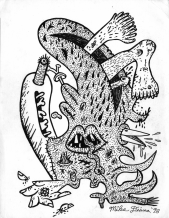


 We Are Rising National Gallery For You! Go to Kyjov by Krásná Lípa no.37.
We Are Rising National Gallery For You! Go to Kyjov by Krásná Lípa no.37.
Comments
There are currently no comments.Add new comment